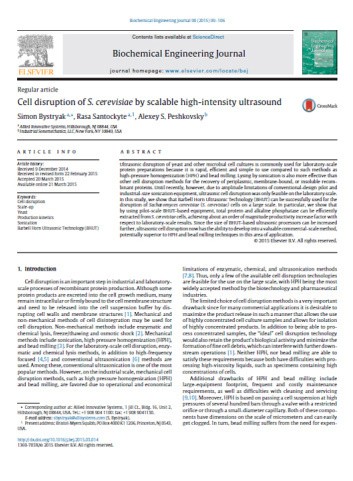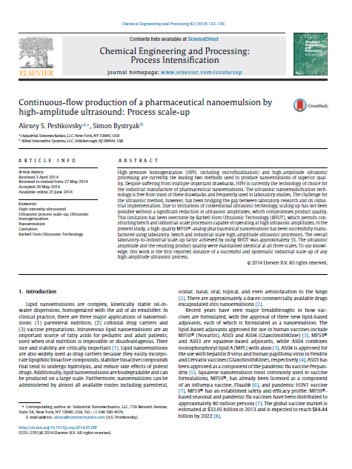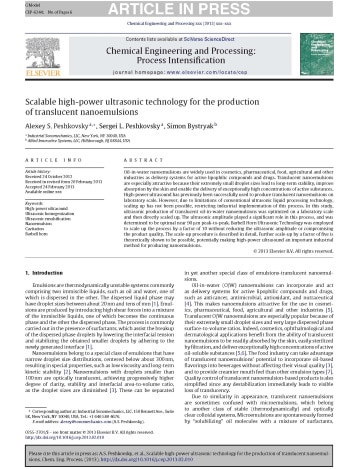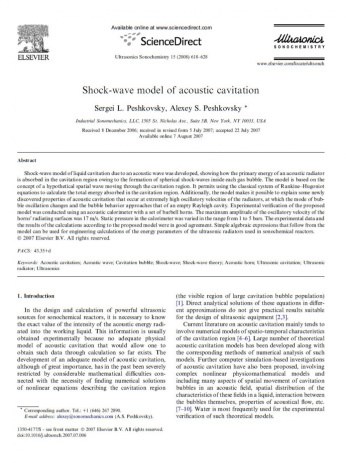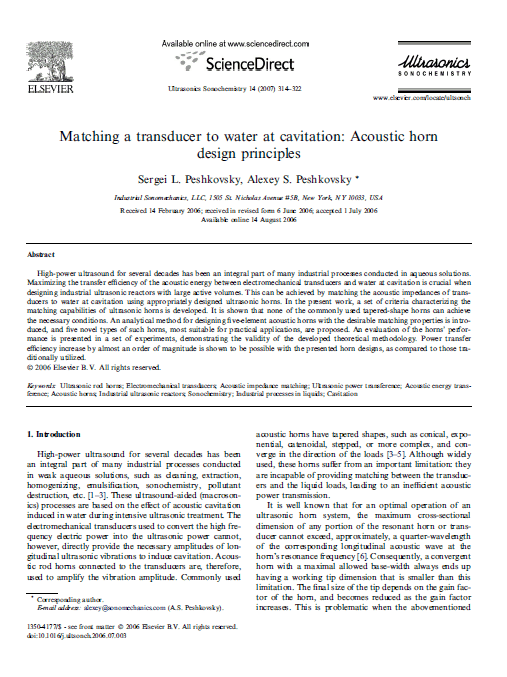Pharmacokinetics of Two Nanoemulsion Formulations of Δ8‐Tetrahydrocannabinol in Rats
Abstract
The use of Δ8-tetrahydrocannabinol (Δ8-THC) has increased in recent years. Given that the oral absorption of cannabinoids in oil formulations is typically slow and variable, nanoemulsions may be an improved delivery vehicle. Therefore, we characterized the pharmacokinetics (PK) in Sprague-Dawley rats following the administration of three different oral formulations containing 10 mg/kg Δ8-THC: a translucent liquid nanoemulsion, a reconstituted powder nanoemulsion, and a medium chain triglyceride (MCT) oil solution for comparison. Δ8-THC was also administered intravenously at 0.6 mg/kg. Plasma samples were quantified for Δ8-THC and two metabolites, 11-hydroxy-Δ8-THC (11-OH-Δ8-THC) and 11-carboxy Δ8-THC (COOH-Δ8-THC). Non-compartmental PK parameters were calculated, and a PK model was developed based on pooled data. Despite a smaller median droplet size of the translucent liquid nanoemulsion (26.9 nm) compared to the reconstituted powder nanoemulsion (168 nm), the PK was similar for both. The median Tmax values of Δ8-THC for the nanoemulsions (0.667 and 1 h) were significantly shorter than the median Tmax of Δ8-THC in MCT oil (6 h). This resulted in an approximately 4-fold higher Δ8-THC exposure over the first 4 h for the nanoemulsions relative to the MCT oil solution. The active 11 OH-Δ8-THC metabolite followed a similar pattern to Δ8-THC. The non-compartmental bioavailability estimates of Δ8-THC for the nanoemulsions (11–16.5%) were lower than for the MCT oil solution (>21.5%). However, a model-based analysis indicated similar bioavailability for all three oral formulations. These results demonstrate favorable absorption properties of both nanoemulsions, despite the difference in droplet sizes, compared to an MCT oil formulation.Cannabis Extract Nanoemulsions Produced by High-intensity Ultrasound: Formulation Development and Scale-up
Abstract
Over the past several decades, it has been demonstrated that cannabinoids offer a wide range of therapeutic benefits. Their oral administration, however, while arguably the most convenient and discrete, has been associated with low bioavailability, delayed onset of action and poor reproducibility resulting from the extracts’ strongly lipophilic character. To overcome these obstacles, cannabinoids can be incorporated into oil-in-water nanoemulsions: a process known to enhance the delivery of lipophilic bio-actives by making them behave like water-soluble (hydrophilic) compounds. In this manuscript, formulation development and production scale-up procedures for a cannabis extract (CBDX, 55% cannabidiol)-containing nanoemulsion are described. Nano-emulsion samples were prepared by high-intensity ultrasonic liquid processing, and the formulation was optimized for carrier oil and surfactant(s) contents as well as for the hydrophilic-lipophilic balance (HLB) of the surfactant mixture. Translucent CBDX-containing nanoemulsions with median droplet sizes well below 100 nm were possible to form with synthetic surfactants (Tween 80/Span 80 mixture), but not with a natural surfactant (Q-naturale®). By utilizing Barbell Horn® Ultrasonic Technology (BHUT), the nano-emulsification process was successfully scaled up, achieving a commercial-level processing rate equivalent to one million nanoemulsified 10 mg CBDX doses made per month with a single bench-scale ultrasonic liquid processor (BSP-1200).CELL DISRUPTION OF S. CEREVISIAE BY SCALABLE HIGH-INTENSITY ULTRASOUND
Abstract
Ultrasonic disruption of yeast and other microbial cell cultures is commonly used for laboratory-scale protein preparations because it is rapid, efficient and simple to use compared to such methods as high-pressure homogenization (HPH) and bead milling. Lysing by sonication is also more effective than other cell disruption methods for the recovery of periplasmic, membrane-bound, or insoluble recombinant
proteins. Until recently, however, due to amplitude limitations of conventional-design pilot and industrial-size sonication equipment, ultrasonic cell disruption was only feasible on the laboratory scale. In this study, we show that Barbell Horn Ultrasonic Technology (BHUT) can be successfully used for the disruption of Sacharomyces cerevisiae (S. cerevisiae) cells on a large scale. In particular, we show that by using pilot-scale BHUT-based equipment, total protein and alkaline phosphatase can be efficiently extracted from S. cerevisiae cells, achieving about an order of magnitude productivity increase factor with respect to laboratory-scale results. Since the size of BHUT-based ultrasonic processors can be increased
further, ultrasonic cell disruption now has the ability to develop into a valuable commercial-scale method, potentially superior to HPH and bead milling techniques in this area of application.CONTINUOUS-FLOW PRODUCTION OF A PHARMACEUTICAL NANOEMULSION BY HIGH-AMPLITUDE ULTRASOUND: PROCESS SCALE-UP
Abstract
High-pressure homogenization (HPH, including microfluidization) and high-amplitude ultrasonic processing are currently the leading two methods used to produce nanoemulsions of superior quality. Despite suffering from multiple important drawbacks, HPH is currently the technology of choice for the industrial manufacture of pharmaceutical nanoemulsions. The ultrasonic nanoemulsification technology is free from most of these drawbacks and frequently used in laboratory studies. The challenge for the ultrasonic method, however, has been bridging the gap between laboratory research and its industrial implementation. Due to limitations of conventional ultrasonic technology, scaling up has not been possible without a significant reduction in ultrasonic amplitudes, which compromises product quality. This limitation has been overcome by Barbell Horn Ultrasonic Technology (BHUT), which permits constructing bench and industrial-scale processors capable of operating at high ultrasonic amplitudes. In the present study, a high-quality MF59®-analog pharmaceutical nanoemulsion has been successfully manufactured using laboratory, bench and industrial-scale high-amplitude ultrasonic processors. The overall laboratory-to-industrial scale-up factor achieved by using BHUT was approximately 55. The ultrasonic amplitude and the resulting product quality were maintained identical at all three scales. To our knowledge, this work is the first reported instance of a successful and systematic industrial scale-up of any high-amplitude ultrasonic process.SCALABLE HIGH-POWER ULTRASONIC TECHNOLOGY FOR THE PRODUCTION OF TRANSLUCENT NANOEMULSIONS
Abstract
Oil-in-water nanoemulsions are widely used in cosmetics, pharmaceutical, food, agricultural and other industries as delivery systems for active lipophilic compounds and drugs. Translucent nanoemulsions are especially attractive because their extremely small droplet sizes lead to long-term stability, improve absorption by the skin and enable the delivery of exceptionally high concentrations of active substances. High-power ultrasound has previously been successfully used to produce translucent nanoemulsions in laboratory scale. However, due to limitations of conventional ultrasonic liquid processing technology, scaling up has not been possible, restricting industrial implementation of this process. In this study, ultrasonic production of translucent oil-in-water nanoemulsions was optimized on a laboratory scale and then directly scaled up. The ultrasonic amplitude played a significant role in this process, and as determined to be optimal near 90 microns peak-to-peak. Barbell Horn Ultrasonic Technology was employed to scale up the process by a factor of 10 without reducing the ultrasonic amplitude or compromising the product quality. The scale-up procedure is described in detail. Further scale-up by a factor of five is theoretically shown to be possible, potentially making high-power ultrasound an important industrial method for producing nanoemulsions.SHOCK-WAVE MODEL OF ACOUSTIC CAVITATION
Abstract
Shock-wave model of liquid cavitation due to an acoustic wave was developed, showing how the primary energy of an acoustic radiator is absorbed in the cavitation region owing to the formation of spherical shock-waves inside each gas bubble. The model is based on the concept of a hypothetical spatial wave moving through the cavitation region. It permits using the classical system of Rankine–Hugoniot equations to calculate the total energy absorbed in the cavitation region. Additionally, the model makes it possible to explain some newly discovered properties of acoustic cavitation that occur at extremely high oscillatory velocities of the radiators, at which the mode of bubble oscillation changes and the bubble behavior approaches that of an empty Rayleigh cavity.MATCHING A TRANSDUCER TO WATER AT CAVITATION – ACOUSTIC HORN DESIGN PRINCIPLES
Abstract
High-power ultrasound for several decades has been an integral part of many industrial processes conducted in aqueous solutions. Maximizing the transfer efficiency of the acoustic energy between electromechanical transducers and water at cavitation is crucial when designing industrial ultrasonic reactors with large active volumes. This can be achieved by matching the acoustic impedances of transducers to water at cavitation using appropriately designed ultrasonic horns. In the present work, a set of criteria characterizing the matching capabilities of ultrasonic horns is developed. It is shown that none of the commonly used tapered-shape horns can achieve the necessary conditions. An analytical method for designing five-element acoustic horns with the desirable matching properties is introduced,

